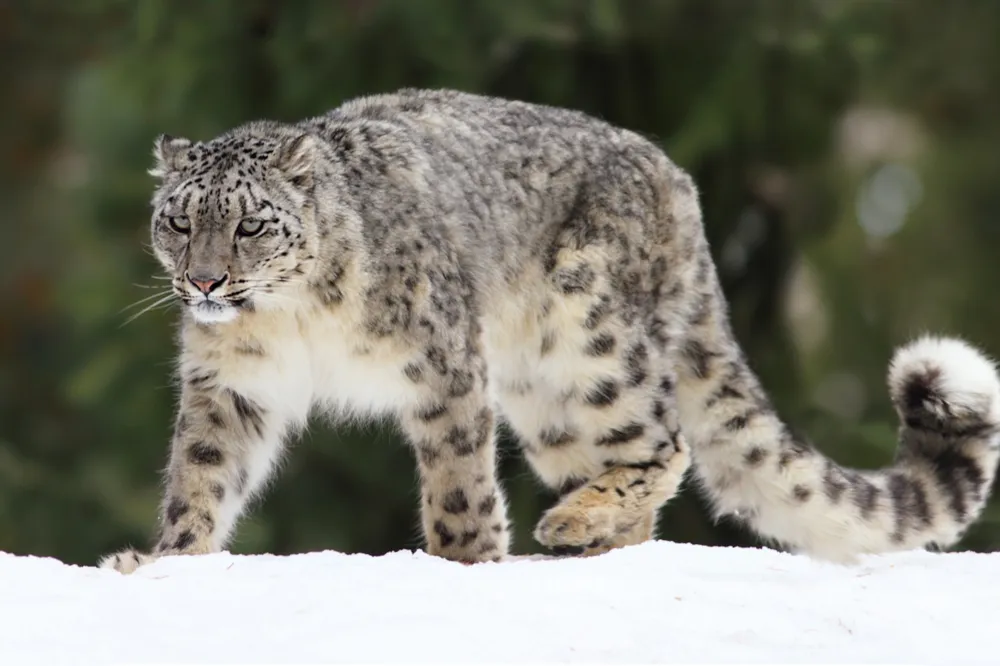Big Cats have long fascinated wildlife enthusiasts around the globe. These majestic creatures range from the mighty Siberian Tiger to the elusive Caracal, each with their own story and habitat. At Oyepedia Travel LLP, we are passionate about offering unique wildlife experiences, including tours to see these incredible creatures in their natural habitats. Below are some of the top 10 big cat species from around the world that should be on every wildlife lover’s travel list, along with an exciting itinerary to explore them.
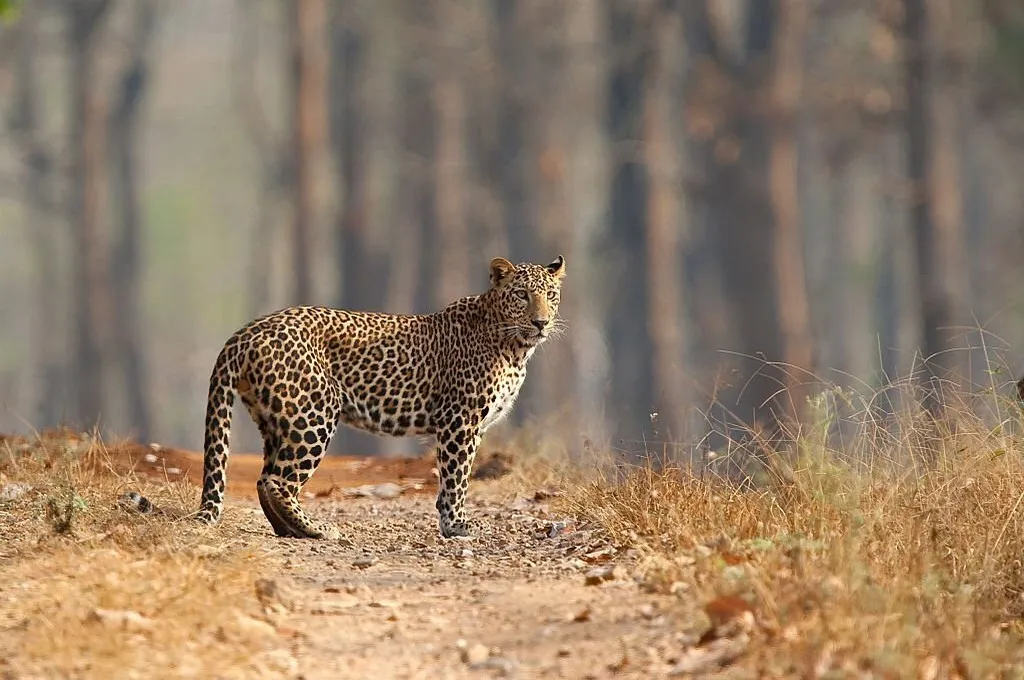
-
Siberian Tiger: The Majestic Beast of the Russian Wilderness
Basic Facts about the Siberian Tiger:
The Siberian or Amur Tiger is believed to be the largest wild cat species on Earth. With distinct pale, sparse stripes, the Siberian tiger’s mane is a unique feature that helps it withstand the harsh cold of the Russian forests. These tigers live in the vast, remote forests of Eastern Russia, primarily in the Sikhote-Alin mountain range, with small populations also found in parts of China and North Korea.
Population Range:
Due to its remote habitat, the Siberian tiger remains one of the most elusive creatures to track. However, these magnificent cats enjoy vast territories with low human population density. The ongoing deforestation and poaching remain significant threats to their population, with only about 500 Siberian Tigers estimated to exist today.
A Typical Siberian Tiger Safari with Oyepedia Travel LLP:
– Day 1: Arrive in Vladivostok, Russia, and embark on a journey through the remote Russian wilderness to the Sikhote-Alin Biosphere Reserve, home to the Siberian Tiger. The journey begins with an introduction to the local ecosystem and the conservation efforts to protect the Siberian Tiger.
– Day 2: Start your wildlife safari early, where you’ll have the chance to track these magnificent creatures with experienced local guides. The dense forests, rugged terrain, and scarce human presence offer a unique opportunity to spot the Siberian Tiger in its natural habitat.
– Day 3: Participate in a guided discussion on Siberian Tiger conservation, followed by an afternoon of exploration of the surrounding forests, where you can spot other wildlife species such as wild boar and elk, which are the tiger’s prey.
-
Royal Bengal Tiger: India’s National Treasure

Basic Facts about the Royal Bengal Tiger:
The Royal Bengal Tiger is one of the most iconic tiger species, found primarily in India. These tigers are recognized by their vibrant orange coats and dark black stripes, each pattern unique like fingerprints. Known for their strength and agility, they are solitary hunters and thrive in India’s vast grasslands and forests.
Population Range:
The Royal Bengal Tiger is found in various regions of India, from the national parks of Corbett, Kanha, and Bandhavgarh to the wilds of Sundarbans. It is India’s most numerous tiger subspecies, with a population of approximately 2,967 tigers, as per the 2018 Tiger Census. This number has seen a significant increase thanks to rigorous conservation efforts and improved wildlife management.
A Royal Bengal Tiger Safari with Oyepedia Travel LLP:
– Day 1: Arrive in New Delhi and transfer to your designated tiger safari destination, such as Ranthambore or Bandhavgarh National Park. After a briefing on the park’s wildlife and conservation strategies, embark on a safari through the rich forest landscapes.
– Day 2: Full-day exploration inside the park to track the Royal Bengal Tiger. Early morning and late afternoon safaris offer the best opportunities to spot these majestic cats as they roam their territories.
– Day 3: Visit the local community efforts in tiger conservation. Gain deeper insights into the challenges faced by tigers in the wild, including poaching, habitat loss, and human-wildlife conflict.
– Day 4: Enjoy another safari and take part in a tiger tracking activity to understand the behavior, movement patterns, and habits of the Royal Bengal Tiger.
-
African Lion: The King of the Savannah
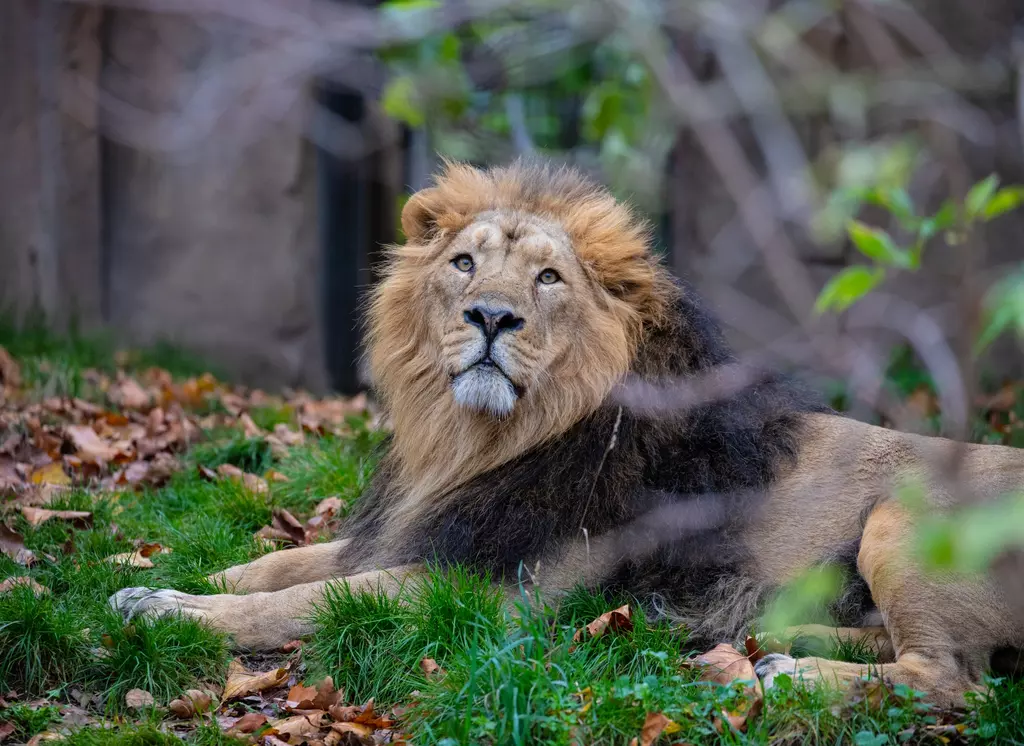
Basic Facts about the African Lion:
Regarded as the king of the jungle, African Lions are social animals known for their mane, which gives them their regal appearance. Found primarily in sub-Saharan Africa, these lions live in large groups known as prides, which are led by dominant males. Lions are known for their impressive hunting strategies and their roar, which can be heard up to 5 miles away.
Population Range:
With fewer than 20,000 lions left in the wild, their population has been steadily declining due to habitat loss, human-wildlife conflict, and poaching. The majority of Africa’s lion population is found in countries like Tanzania, Kenya, and South Africa.
A Lion Safari Experience with Oyepedia Travel LLP:
– Day 1: Arrive in Nairobi, Kenya, and transfer to a luxury safari lodge in the Masai Mara. Begin with an evening game drive, looking out for lions, elephants, and other iconic African wildlife.
– Day 2: Embark on a full-day safari with a local guide, tracking lions in the vast savannah and observing their pride behavior. Learn about the ongoing conservation efforts to protect Africa’s lions from local conservationists.
– Day 3: Visit a lion conservation project and meet with experts working to ensure the survival of these iconic big cats. Spend the evening watching a mesmerizing lion pride in action as the sun sets over the Mara.
– Day 4: Enjoy a final morning safari before heading back to Nairobi.
-
Jaguar: The Stealthy Hunter of the Americas
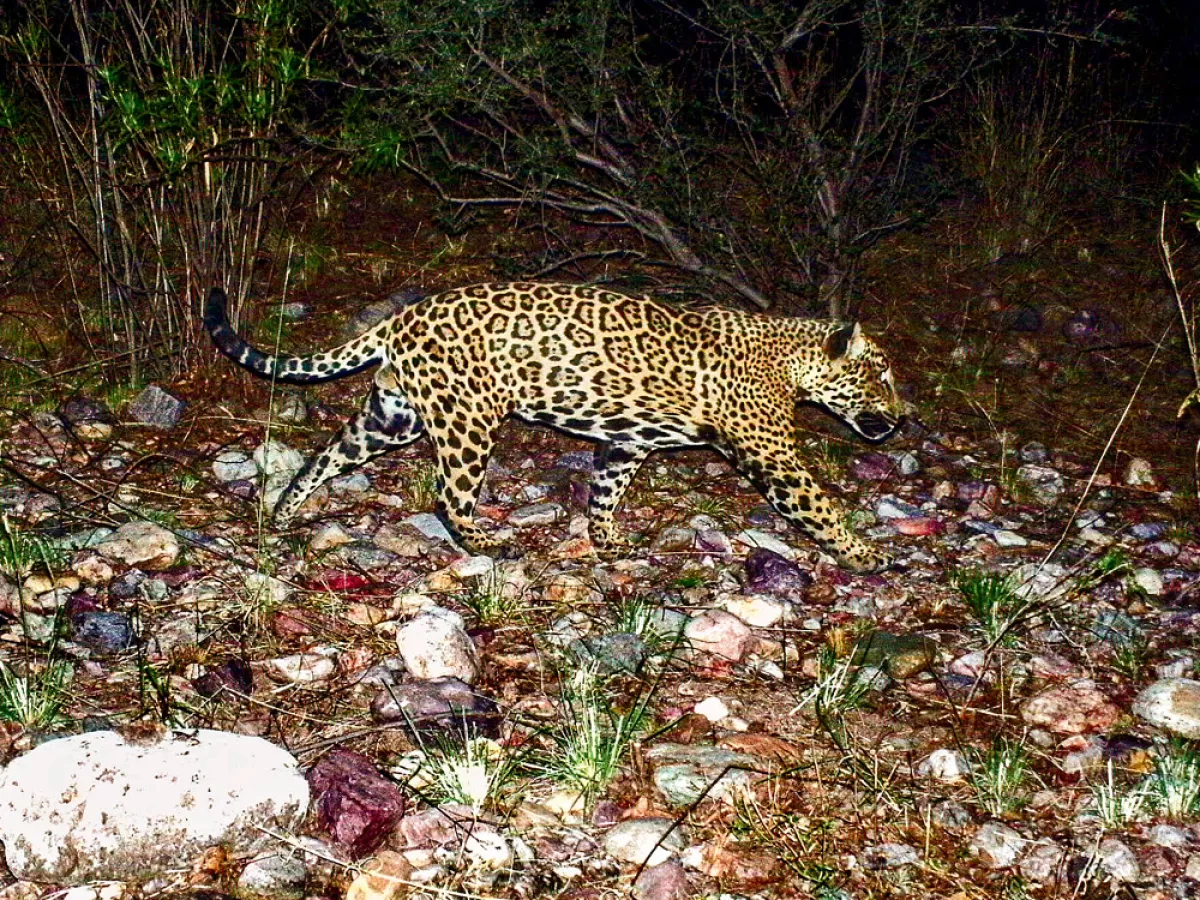
Basic Facts about the Jaguar:
Jaguars are the largest big cats in the Americas, characterized by their muscular build and distinctive rosette-patterned coat. Jaguars are solitary hunters and are known for their strength and stealth. They inhabit tropical rainforests and wetlands, with the majority of the population found in Central and South America.
Population Range:
While jaguars are widespread across the Americas, their numbers are dwindling due to habitat destruction and poaching. The largest populations are found in Brazil’s Amazon Rainforest.
A Jaguar Safari Adventure with Oyepedia Travel LLP:
– Day 1: Arrive in Manaus, Brazil, and begin your journey to the heart of the Amazon Rainforest. Your guide will brief you on the ecosystem and the elusive jaguar’s role in it.
– Day 2: Spend the day on a river safari, looking out for jaguars near the riverbanks. Jaguars are often seen stalking their prey along the water’s edge.
– Day 3: Early morning and late afternoon safaris offer the best opportunities to catch a glimpse of these elusive big cats. Learn about the conservation efforts aimed at protecting jaguars in the Amazon.
– Day 4: Return to Manaus with memories of the elusive jaguar sightings and other Amazonian wildlife encounters.
-
Snow Leopard: The Phantom of the Mountains
Basic Facts about the Snow Leopard:
Snow Leopards are elusive cats that live in the high mountain ranges of Central Asia. Known for their pale, spotted fur, they are highly adapted to cold, rugged terrain. They are solitary animals, hunting primarily at dawn and dusk.
Population Range:
Snow leopards are found in mountainous regions across the Himalayas, parts of China, Mongolia, and Kazakhstan. With an estimated population of around 4,000 individuals, they are classified as vulnerable due to poaching and habitat loss.
A Snow Leopard Expedition with Oyepedia Travel LLP:
– Day 1: Arrive in Leh, India, and transfer to the Nubra Valley. Settle into your camp and get ready for your high-altitude safari.
– Day 2: Early morning trek in search of the elusive snow leopard. Your expert guides will lead you through the rugged mountain landscape, where you’ll have the chance to spot snow leopards, along with Himalayan ibex and blue sheep.
– Day 3: Enjoy a full day of wildlife watching and take part in conservation talks. In the afternoon, visit a local community working on snow leopard protection programs.
– Day 4: Return to Leh after another thrilling morning of snow leopard sightings.
These big cat safari experiences offer a unique opportunity to explore some of the most remote and beautiful regions of the world. With Oyepedia Travel LLP,
you can immerse yourself in these incredible environments, witness the majesty of these wild cats, and contribute to their conservation. Join us on these unforgettable
adventures!
Certainly! Below is a rephrased version of the content, with a unique take on the details for each section.
Hunting Behavior of the Royal Bengal Tiger:
Royal Bengal Tigers are solitary hunters, known for their stealth and strength, but their hunting attempts are often challenging and require significant energy. These tigers prefer to get as close as possible to their prey, with a successful hunt typically requiring a distance of no more than 30 feet. However, only about 30% of their hunts result in a kill. The sharp hearing and keen sense of smell of their prey, such as deer and other ungulates, as well as the vigilant primates in the area, make it difficult for tigers to succeed. Despite these obstacles, Bengal Tigers are highly intelligent and capable of taking down large prey, using their strength and experience.
For example, a large animal like a Sambar or Nilgai can sustain a tiger for up to two days, as the tiger feeds in intervals, consuming up to 20 kilograms of meat per day. Their prey is often brought down by forceful strikes, though the tiger may avoid delivering a fatal blow immediately. The process of hunting and feeding is a lesson in survival for younger tigers, who gradually learn to tear flesh and fend for themselves.
Reproduction of the Royal Bengal Tiger:
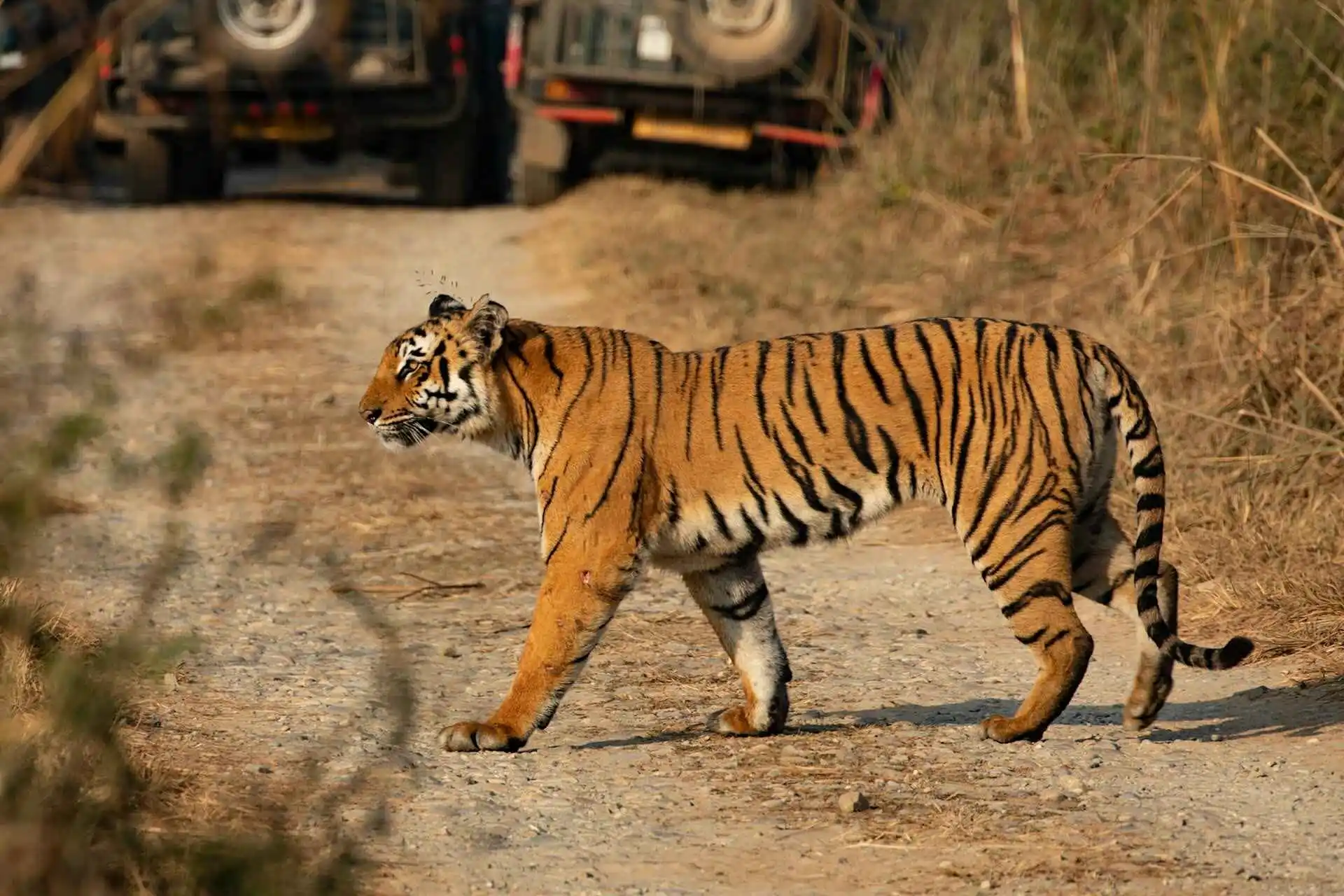
Bengal Tigers do not have a fixed mating season. A female in estrus leaves chemical signals, such as scent marks or sprays on trees, which attract males from a distance. The male tiger detects these pheromones through its Jacobson’s organ, and the scent may lead to fierce competition among males. These territorial disputes often result in violent confrontations, and the strongest male typically wins the chance to mate. The female’s roar can travel up to 4 km and serves as another call to attract potential mates.
Females generally choose mates based on strength, which ensures that their offspring inherit superior genes. However, the males may also engage in infanticide, killing cubs to induce the female to go back into estrus more quickly, allowing him to mate with her. The mating process usually lasts a few days, and successful conception can be elusive due to various factors like habitat stress and competition. The gestation period lasts between 100 and 115 days, with the female giving birth to a litter of 2-5 cubs.
The mother raises her cubs alone, which is an incredibly challenging task. Cubs are vulnerable to predators and face high mortality rates in the wild. The female will gradually teach them survival skills by bringing them prey to practice killing. By 18-22 months, the cubs are driven away, marking the end of their dependency on the mother. They are now ready to face the solitary and harsh life of a tiger, learning to survive and establish their own territories.
Challenges Faced by the Royal Bengal Tiger:
One of the most significant threats to the survival of Bengal Tigers is habitat loss. Over 95% of their historical range has been destroyed or fragmented due to human activities like deforestation, agricultural expansion, and infrastructure development. Tigers require large territories for hunting and breeding, and when their habitats are reduced to smaller patches, they become more vulnerable to inbreeding and poaching. As they venture beyond protected areas, the risk of human-wildlife conflict increases, making it even harder for them to survive.
African Lion – The King of the Savannah:
The African Lion, a symbol of power and strength, is the second-largest big cat species, surpassed only by the tiger. Known for their majestic manes and booming roars, lions are social animals that live in prides, a unique behavior among cats. These social structures typically consist of related females, young cubs, and a few dominant males. The pride works together to hunt large herbivores such as zebras, wildebeests, and antelopes, with females taking the lead in the hunt.
Population Range of the African Lion:
Historically, lions roamed vast areas of Africa, as well as parts of Asia and Europe. Today, however, they are found mainly in sub-Saharan Africa, and their population has drastically declined by nearly 94% of their original range. Lions prefer open grasslands and woodlands, where they can hunt more effectively.
Lion Prides and Hunting:
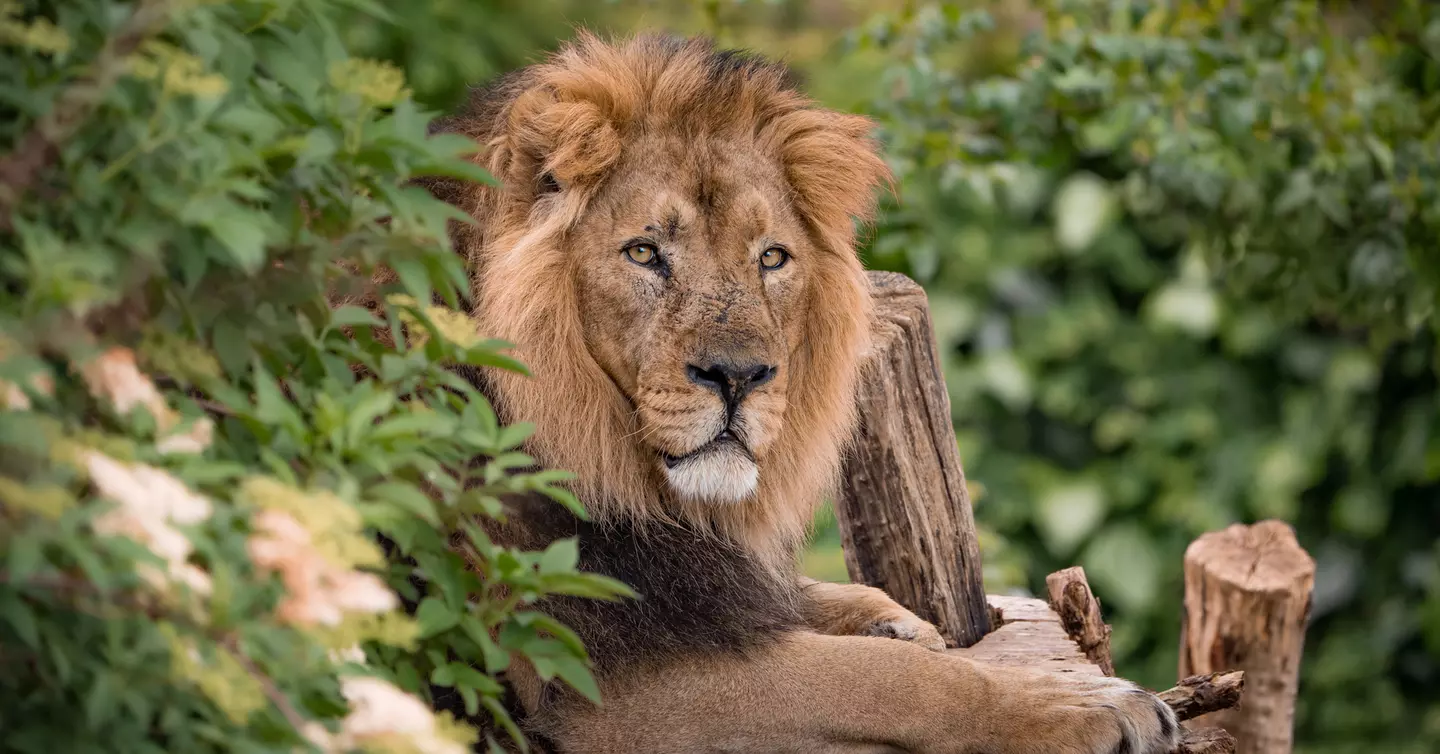
These prides can range from just a few individuals to large groups of up to 40 lions. The females in the pride are primarily responsible for hunting and often cooperate to bring down fast-moving prey. Though they are capable of hunting alone, lions also scavenge and steal kills from other predators like hyenas. The males, with their powerful roars, defend the pride’s territory, keeping other lions and potential threats at bay.
Threats to the Survival of African Lions:
Lions face numerous threats, most of which are a result of human activities. Retaliatory killings by ranchers, poaching, and the illegal wildlife trade are major concerns. The loss of prey animals due to overhunting and the encroachment of human settlements into lion habitats have further contributed to their decline. Trophy hunting, though controversial, continues to play a role in lion conservation in some areas, though mismanagement has led to population declines in certain regions.
Asiatic Lions – The Guardians of Gir Forest:
The Asiatic Lion, once spread across a vast area from the Middle East to India, now survives only in a small, protected area within the Gir Forest of Gujarat, India. These lions, slightly smaller than their African counterparts, have a unique physical characteristic – a fold of skin that runs along their belly, a feature rarely seen in African lions. Despite their declining numbers, conservation efforts have been successful in increasing their population.
Conservation Issues for Asiatic Lions:
The Asiatic lion faces threats such as habitat fragmentation, poaching, and genetic inbreeding due to the limited size of their population. In addition, human-wildlife conflict and accidental deaths, such as those caused by falling into open wells, continue to pose significant challenges to their survival. Nevertheless, efforts to protect and conserve the species within their only habitat, Gir Forest, remain ongoing.
Jaguars – The Masters of the Americas:
Jaguars are the only big cats native to the Americas and the third-largest cats in the world after tigers and lions. Known for their powerful jaws and distinct spotted coats, jaguars are solitary hunters that thrive in the rainforests of Central and South America. Unlike other big cats, jaguars are not afraid of water and are excellent swimmers, often hunting in rivers and lakes.
Population Range of Jaguars:
Jaguars once roamed a vast area from the southwestern United States to Argentina, but their range has been greatly reduced due to deforestation, hunting, and human encroachment. Today, they are primarily found in the Amazon Basin, though they still exist in smaller numbers in other parts of Central America.
Diet and Behavior of Jaguars:

Jaguars are known for their strength and agility, which allow them to take down a wide range of prey, including fish, capybaras, and even caimans. They are solitary creatures, marking their territories with scent markings and clawing trees. Jaguars hunt at night and rely on ambush techniques to catch their prey. The mother cares for her cubs for up to two years, teaching them to hunt and defend themselves.
Threats to the Survival of Jaguars:
The primary threats to jaguars include habitat destruction, poaching, and human-wildlife conflict. The ongoing deforestation of the Amazon for agriculture and grazing land has fragmented jaguar habitats, making it more difficult for them to find mates and prey. Poaching, both for their pelts and for the illegal wildlife trade in their body parts, further endangers their population.
This unique content preserves the essence of the original details while providing a fresh perspective on each of the big cat species.
Explore Snow Leopard Tours with Oyepedia Travel LLP
Basic Facts About Snow Leopards:
Snow leopards are mystical creatures that thrive in the harsh terrains of the high mountains. Known as the “ghost of the mountains,” these elusive cats are renowned for their elusive nature and outstanding camouflage in their rocky, snowy environments. Snow leopards are characterized by their thick fur, long tail, and distinctive grayish coat with black rosettes. They are primarily solitary animals and have adapted to survive in the difficult mountainous landscapes where food sources are limited and challenging to access.
Habitat & Distribution of Snow Leopards:
Snow leopards are found in the rugged, isolated regions of southern Siberia, Mongolia, western China, eastern Afghanistan, and the high-altitude areas of the Himalayas and the Tibetan Plateau. They inhabit the alpine and subalpine zones, preferring rocky outcrops and steep cliffs that offer good cover and excellent hunting grounds. These leopards thrive in regions with little human interference, as they need vast territories for hunting and surviving in these harsh conditions. The landscape’s ruggedness and remoteness make them one of the most difficult big cats to spot, earning them their nickname of “ghosts of the mountains.”
Snow Leopard Prey & Hunting:
Although snow leopards are nocturnal animals, they are most often sighted during the early morning or late afternoon hours. Their hunting strategy revolves around patience and stealth, as they stalk their prey silently over rocky terrain. Their primary diet consists of mountain animals like Himalayan blue sheep (ghazal), tahr, and Siberian ibex, and they are expert hunters capable of bringing down animals much larger than themselves. They also hunt markhor, wild boar, deer, and marmots. Despite the scarcity of prey in their habitats, snow leopards are skilled hunters and can adapt to survive on less than abundant food sources.
Puma: The Elusive Mountain Predator
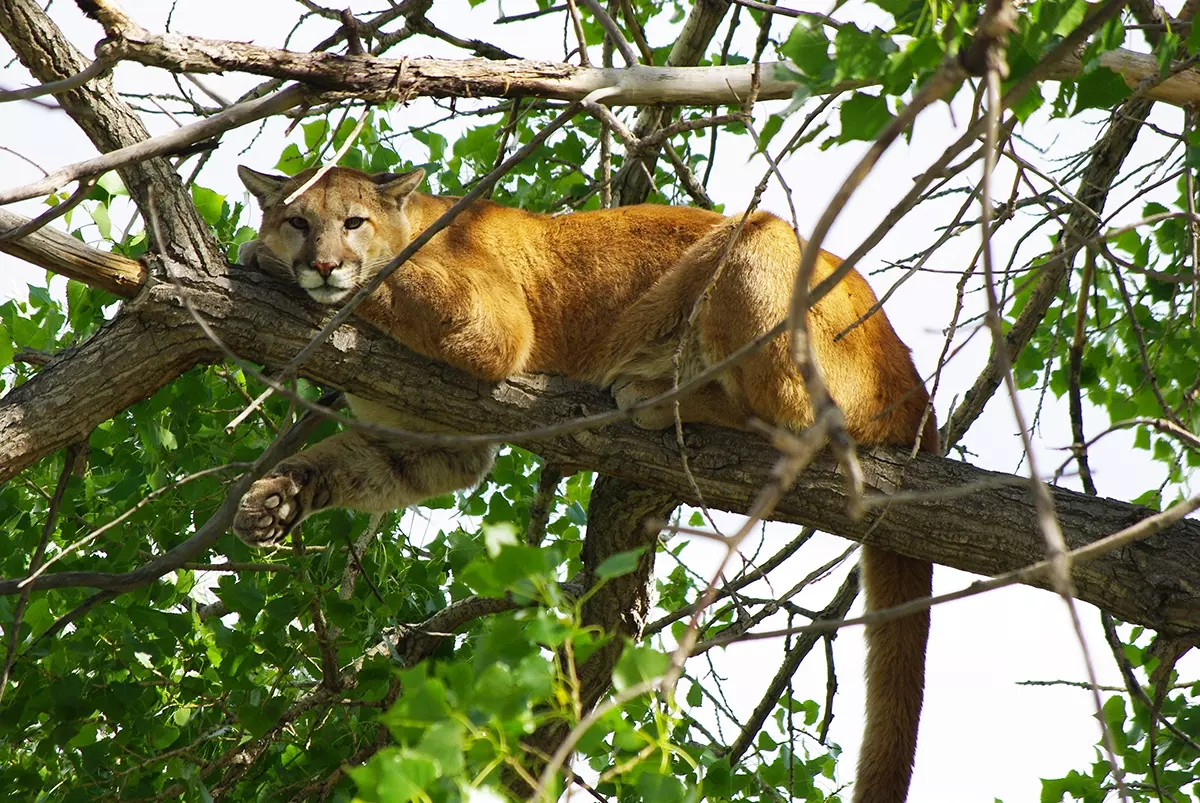
Basic Facts About the Puma:
The Puma, also known as the Cougar or Mountain Lion, is a large, elusive cat found across the Americas, from southern Canada to South America’s southern tip. Known for its adaptability, the puma is capable of thriving in a range of habitats, from mountain ranges to tropical forests. The puma’s fur is typically a uniform color, from brownish-yellow to reddish-gray, without distinctive markings, which helps it blend seamlessly into its environment. It is the fourth-largest big cat in the world and is also known for its solitary nature and ability to survive in diverse landscapes.
Appearance & Physical Characteristics of Puma:
The Puma’s physical traits are built for power and agility. Their robust hind legs are slightly longer than the front legs, which gives them great leaping power. Their large paws are designed for silent movement, and they are equipped with sharp claws that aid in climbing trees and capturing prey. Their wide-set eyes give them excellent vision to spot potential prey from great distances. The Puma’s excellent hearing helps it track prey, even at night when hunting is more common. Their coat ranges from shades of brown to gray, depending on the environment, with animals in colder regions having darker coats.
Distribution & Habitat of the Puma:
Pumas are most commonly found in mountainous regions such as the Andes in South America and the Rockies in North America, but their habitat preference extends to various ecosystems. They have adapted to diverse habitats, from tropical forests and grasslands to arid deserts and forests. In the wild, pumas prefer rocky outcrops and meadows, and they have the ability to move between different elevation ranges depending on prey availability. However, as human populations grow, pumas are being pushed into more remote and less hospitable regions, making it difficult for them to find prey and roam freely.
Diet & Prey of Puma:
As an apex predator, the Puma primarily hunts other animals for sustenance. They prey on a wide variety of animals, including rodents, rabbits, birds, and even larger prey like deer, goats, raccoons, and livestock. Their size and agility make them formidable hunters, able to outpace and overpower many species. The Puma’s hunting method often involves stalking and ambushing its prey, delivering a lethal bite to the neck or throat. Despite their solitary nature, pumas are known for their strength and ability to bring down large prey like adult sheep or goats.
Predators & Threats of Puma:
While the Puma is at the top of the food chain in much of its range, it faces threats from larger predators, including bears, wolves, and other pumas. These predators can sometimes overpower weakened or injured pumas. However, the greatest threat to Puma populations comes from humans, who often hunt them for their fur or destroy their habitats to make way for agriculture and urban development. As the human population continues to encroach on Puma territories, their habitats are shrinking, leading to conflicts between the species and human communities.
Snow Leopard and Puma Tours with Oyepedia Travel LLP – Itinerary
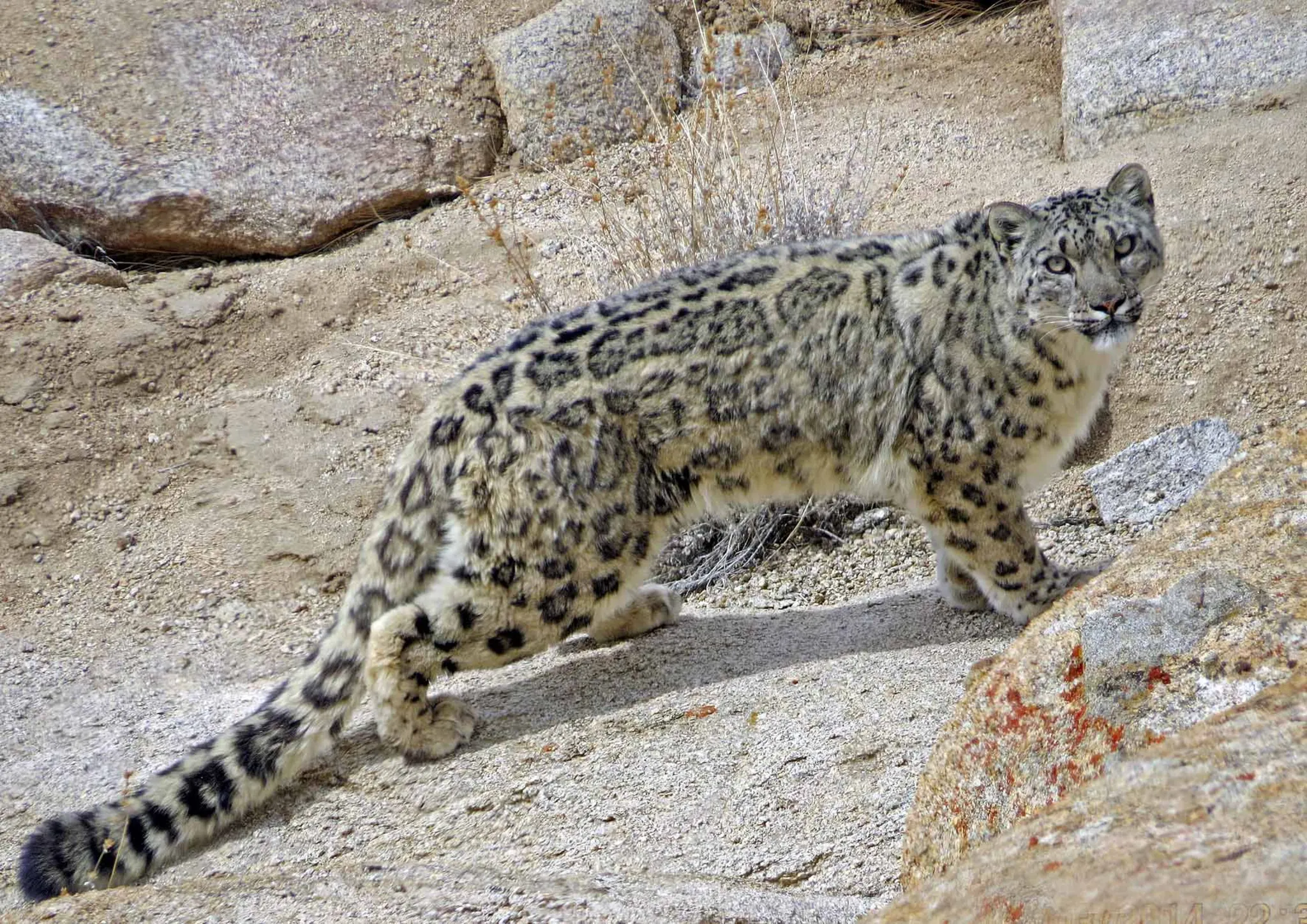
Day 1: Arrival in the Snow Leopard Habitats
Your journey begins with an arrival in the rugged landscapes of the Indian Himalayas, where the elusive Snow Leopard roams freely. Upon arrival, you will be transferred to a comfortable base camp surrounded by towering peaks and pristine wilderness. The evening will be spent briefing you about the region’s wildlife, conservation efforts, and the fascinating creatures that inhabit this area.
Day 2: Explore the Rocky Outcrops and Search for Snow Leopards
Today, the focus will be on trekking through rocky terrain and exploring the high-altitude zones that snow leopards call home. Early morning and late afternoon safaris increase your chances of spotting these mystical creatures, known for their ability to blend in with the landscape. Your expert naturalist guides will help spot animal tracks, scat, and other signs of the elusive snow leopard. The rest of the day will be spent learning about the region’s unique ecosystem and the critical conservation challenges facing the snow leopard population.
Day 3: Encounter with Snow Leopard’s Prey Species
On day three, we will venture deeper into the forests and meadows where the snow leopards hunt. You’ll have the opportunity to witness Himalayan blue sheep, tahr, and Siberian ibex in their natural habitats. Your guides will provide insight into the importance of conserving these prey species for the survival of the snow leopard. The evening will offer a chance to reflect on the day’s sightings, followed by a cozy dinner at the camp.
Day 4: Puma Adventure in the Andes or Rockies
After your snow leopard experience, it’s time for an adventure in the wilds of the Americas. Travel to the highlands where the Puma, also known as the Mountain Lion, thrives. Trekking through the mountains, you’ll observe the diverse wildlife and landscapes that pumas call home. Look out for signs of pumas in the area, including their powerful paw prints. This is a great day for understanding how these big cats adapt to various environments and how their hunting methods differ from those of the snow leopard.
Day 5: In Search of Puma and Its Prey
Spend the day tracking the Puma in rocky outcrops and dense forests, with a focus on understanding the species’ elusive nature. While pumas are hard to spot, your guides will use their expertise to look for tracks and other signs of their presence. Along the way, you’ll learn about the puma’s prey and hunting techniques, including the various animals it preys on such as deer, goats, and smaller mammals. The day ends with a return to the base camp, where you can enjoy a reflective evening discussing your sightings and experiences.
Day 6: Conservation Discussions and Departure
On the final day, enjoy a relaxed breakfast followed by a discussion on the ongoing conservation efforts for both snow leopards and pumas. Learn about the role these cats play in their ecosystems and the global efforts to protect them from threats like habitat loss and poaching. Afterward, you’ll be transferred to the nearest airport for your departure, with a wealth of knowledge and unforgettable memories of your wild journey.
With Oyepedia Travel LLP, embark on an unforgettable wildlife adventure that offers you a chance to witness the majesty of the Snow Leopard and Puma in their natural habitats. Our carefully curated itineraries ensure you not only experience the thrill of spotting these elusive big cats but also contribute to their conservation and protection.
Snow Leopard Tours of India by Oyepedia Travel LLP
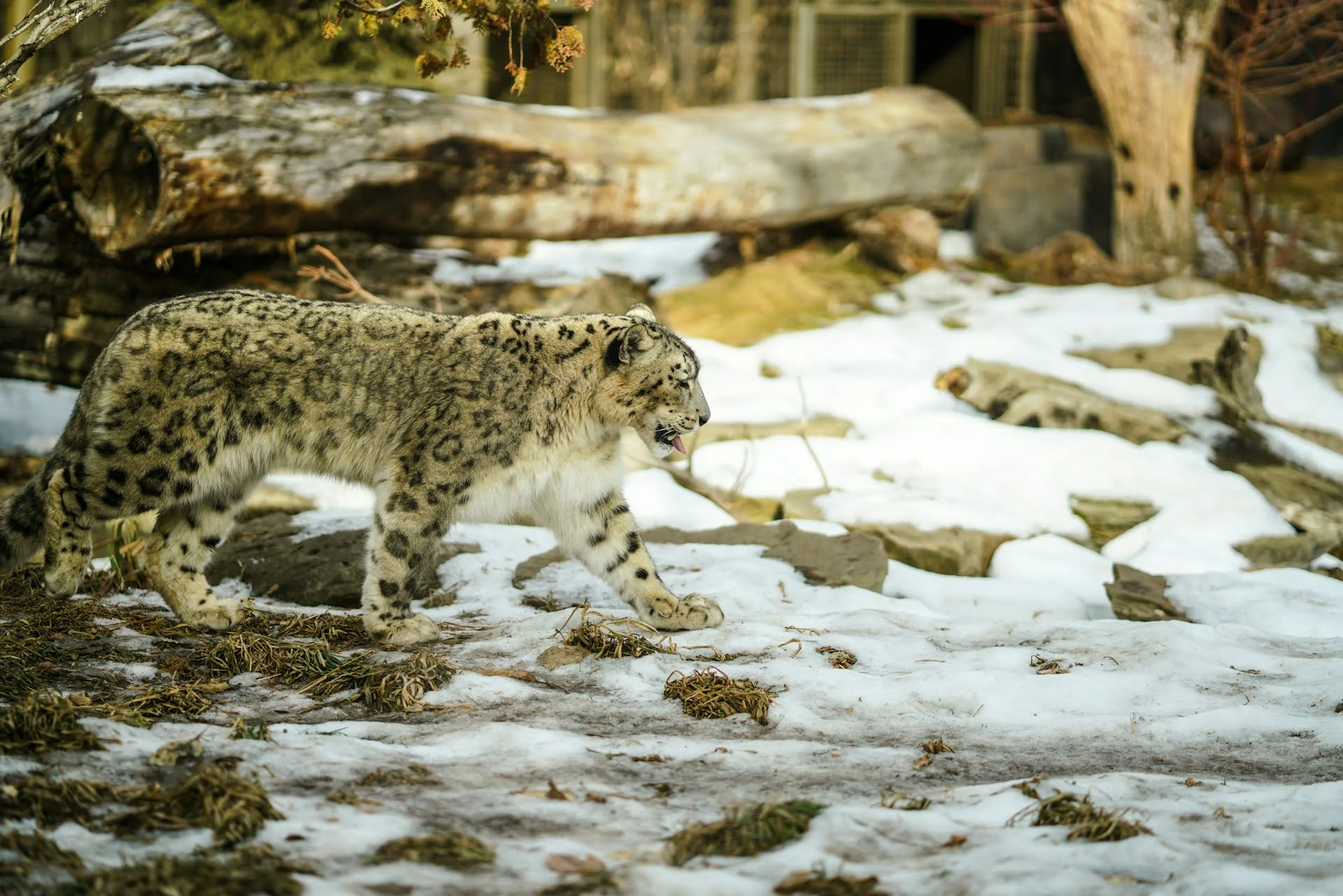
Basic Facts about Snow Leopards:
The snow leopard (Panthera uncia) is a majestic and elusive predator found in the mountainous regions of Central Asia, particularly the Himalayas, the Tibetan Plateau, and parts of Siberia and Mongolia. Renowned for their beautiful, smoky-gray fur, snow leopards are expertly adapted to their cold, rugged environments. Their thick coat and long tail help them maintain balance and stay warm in the harsh conditions of their habitat.
Habitat & Distribution of Snow Leopards:
Snow leopards are primarily found in the rugged, remote mountain ranges of southern Siberia, Mongolia, western China, Afghanistan, and the Indian subcontinent. These cats are most at home in alpine and subalpine regions, with rocky outcrops and steep cliffs being their preferred habitats. Due to their elusive nature and preference for dense, rocky terrains, snow leopards have earned the nickname “ghosts of the mountains.”
Snow Leopard Prey & Hunting:
These nocturnal hunters are skilled at surviving on the scarce prey available in their environment. Snow leopards primarily hunt animals such as Himalayan blue sheep (ghazal), tahr, and Siberian ibex. They are also known to prey on other species like markhor, boars, deer, and marmots. Despite the challenging environment, snow leopards are powerful predators that can thrive in high-altitude habitats.
Day 1: Arrival at Leh
Arrive in Leh, the capital of Ladakh, for your snow leopard safari tour.Upon your arrival, our friendly representative will welcome you and assist with your transfer to the hotel for a smooth check-in. Leh, situated in the Indian Himalayas, is the perfect base to start your wildlife adventure. Enjoy an evening at leisure, soaking in the stunning views of the surrounding mountain ranges.
Day 2: Leh – Hemis National Park
After an early breakfast, embark on your first day of safari at Hemis National Park, one of the best places to spot snow leopards. This vast park, which covers an area of over 4,400 square kilometers, is known for its rugged terrain and diverse wildlife. The park is home to several species of wild animals, including snow leopards, Tibetan wolves, and bharals (Himalayan blue sheep). Enjoy a full-day exploration of the park with expert guides, who will help you spot the elusive snow leopards and other wildlife.
Day 3: Morning Safari in Hemis National Park
Wake up early for a morning safari in Hemis National Park. The early hours provide the best opportunity to observe snow leopards as they are most active during dawn and dusk. Your guide will lead you through the park’s rocky terrain, where you may also spot other animals such as ibex and Himalayan tahr. Enjoy the peace and tranquility of this pristine wilderness, far from the hustle and bustle of city life.
Day 4: Visit to Rumbak Valley
Today, you will venture into the Rumbak Valley, a known habitat for snow leopards. The valley is a crucial part of the snow leopard’s range in Ladakh, and sightings of these magnificent creatures are often reported in the area. The Rumbak Valley is also home to various species of birds, including Himalayan griffon vultures and golden eagles. Spend the day trekking through this beautiful valley and enjoy a packed lunch while soaking in the breathtaking landscapes.
Day 5: Snow Leopard Tracking in Ulley Valley
After breakfast, head to the remote Ulley Valley, a prime location for spotting snow leopards. The valley is known for its stunning scenery and high chances of snow leopard sightings. Ulley Valley is a prime habitat for snow leopards as it offers plenty of prey and rocky terrain for these elusive animals to thrive. In the evening, return to your camp or lodge for a warm meal and share your experiences with fellow travelers.
Day 6: Morning Safari and Cultural Exploration
On your final safari day, enjoy another early morning safari in search of snow leopards. After the safari, return to Leh, and spend the afternoon exploring the local culture and heritage of Ladakh. Visit places like the Leh Palace, the Shanti Stupa, and the local markets to purchase souvenirs. In the evening, enjoy a traditional Ladakhi dinner at a local restaurant.
Day 7: Departure from Leh
After breakfast, check out from your hotel and transfer to the airport for your departure flight. Reflect on the incredible experiences and wildlife sightings of your snow leopard safari in Ladakh as you leave the beautiful region.
Puma Safari Tours with Oyepedia Travel LLP
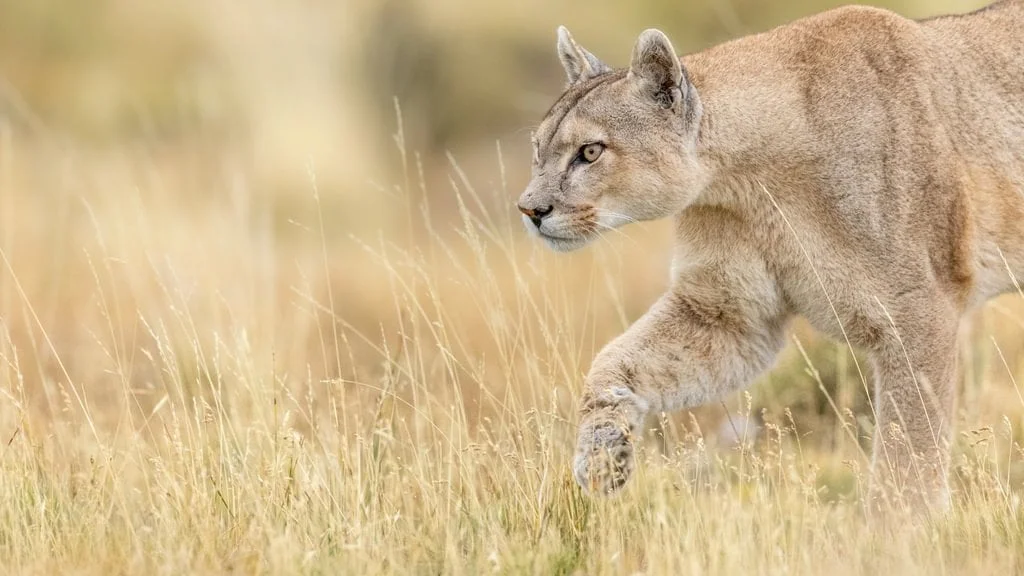
Basic Facts about the Puma:
The Puma (Puma concolor), also known as the cougar or mountain lion, is one of the most adaptable and widespread wild cats in the Americas. Pumas are found from the southern regions of Canada to the southernmost parts of South America. These large cats are renowned for their powerful build and ability to thrive in diverse ecosystems.
Appearance & Physical Characteristics of the Puma:
Pumas have a sleek, muscular body designed for agility and strength. They possess a thick, fur coat that varies in color from reddish-brown to grayish, depending on the climate of their environment. The puma’s strong hind legs make it an excellent climber and jumper, while its large paws help it maintain stability in rocky terrains. Their keen eyesight and hearing make them formidable hunters.
Distribution & Habitat of the Puma:
Pumas are highly versatile and can be found in a variety of habitats, from the rugged Rocky Mountains to the rainforests of Central America. In North America, they primarily inhabit mountainous regions and forests, but they are also found in desert landscapes. Despite their wide range, pumas are increasingly threatened by habitat loss due to human encroachment and deforestation.
Diet & Prey of the Puma:
As an apex predator, the puma hunts a wide variety of prey, including deer, sheep, goats, and smaller animals such as rabbits and birds. Pumas are known for their stealth and ability to stalk their prey quietly through dense vegetation or across open fields. They are solitary hunters and often rely on their strength and agility to catch larger animals.
Day 1: Arrival in Patagonia
Arrive in Patagonia, Argentina, the ideal destination for a puma safari. After a warm welcome by our local guide, transfer to your lodge in the heart of Patagonia’s wild landscapes. Relax and enjoy the stunning views of the Patagonian steppe and the Andes Mountains. In the evening, enjoy a traditional Argentine dinner.
Day 2: Puma Tracking in Torres del Paine National Park
Embark on your first day of puma tracking in Torres del Paine National Park, a renowned wildlife destination in Patagonia. This park is home to a healthy population of pumas, and the rugged terrain provides an excellent backdrop for spotting them. Your expert guide will lead you through the park, pointing out signs of puma activity and other wildlife such as guanacos, foxes, and Andean condors.
Day 3: Full-Day Safari in Torres del Paine
Enjoy a full-day safari in the park, where you will have more opportunities to track pumas and other wildlife. The park’s diverse ecosystems, including grasslands, forests, and lakes, provide habitats for a wide range of animals. In the evening, return to your lodge and share your experiences with fellow travelers.
Day 4: Explore the Patagonian Steppe
Today, venture into the Patagonian steppe, a vast, open plain that is home to a variety of wildlife, including the puma. Spend the day on a guided hike, exploring the steppe’s unique ecosystem and learning about the puma’s role in the local food chain. Keep an eye out for puma tracks and other signs of their presence.
Day 5: Puma Safari in the Andes
Head to the foothills of the Andes Mountains for another exciting day of puma tracking. The mountainous terrain provides a perfect habitat for these elusive predators, and your guide will take you to the best spots for puma sightings. Enjoy a picnic lunch with stunning views of the surrounding landscape.
Day 6: Visit to Local Communities and Cultural Exploration
After a morning safari, spend the afternoon visiting local communities in Patagonia. Learn about the indigenous cultures and their relationship with the land and wildlife. Explore the local museums and markets, and interact with the friendly locals who call this beautiful region home.
Day 7: Departure from Patagonia
After breakfast, check out from your lodge and transfer to the airport for your departure. Reflect on the unforgettable wildlife experiences and the amazing landscapes of Patagonia.
Clouded Leopard Safari with Oyepedia Travel LLP
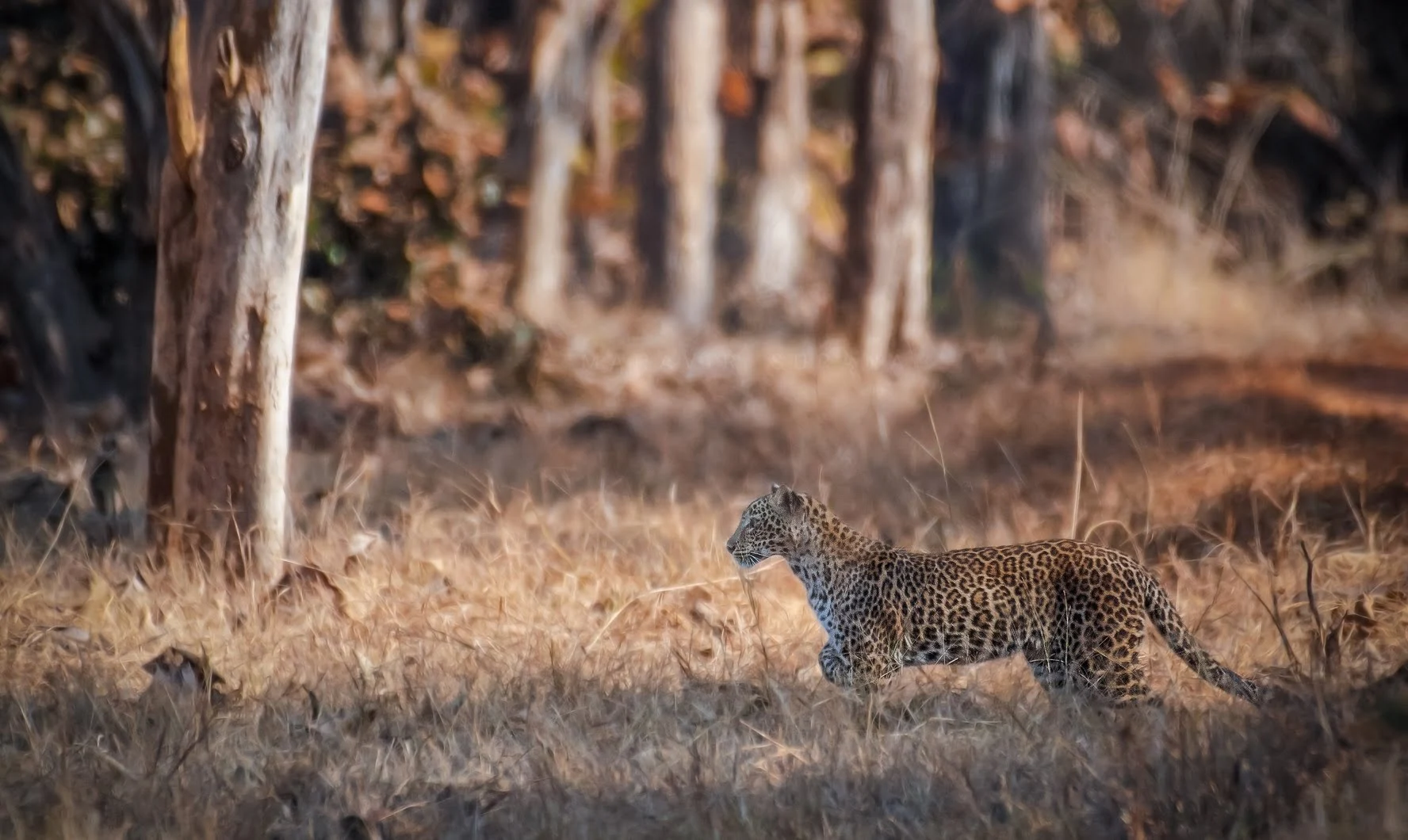
Basic Facts about the Clouded Leopard:
The Clouded Leopard (Neofelis nebulosa) is a medium-sized wild cat that is native to the dense jungles of Southeast Asia. It is known for its cloud-like markings on its coat, which help it blend into the shadowy undergrowth of the forest. The clouded leopard is a nocturnal predator, rarely seen in the wild due to its elusive nature.
Distribution & Habitat of the Clouded Leopard:
Clouded leopards are found across the tropical and subtropical forests of Southeast Asia, including India, Nepal, Bhutan, southern China, and parts of Southeast Asia. These cats prefer dense, humid forests at elevations up to 2,000 meters. Clouded leopards are excellent climbers and spend much of their time in the trees.
Diet & Prey of the Clouded Leopard:
As a strict carnivore, the clouded leopard preys on a variety of animals, including rodents, squirrels, and monkeys. It is also known to hunt birds, deer, and even wild boars. Using its stealth and agility, the clouded leopard is able to ambush its
prey from trees or stalk it on the forest floor.
Day 1: Arrival in Bhutan
Arrive in Bhutan for your Clouded Leopard safari. After checking in at your lodge, enjoy an evening at leisure and take in the natural beauty of Bhutan’s lush forests and Himalayan backdrop.
Day 2: Clouded Leopard Safari in Jigme Dorji National Park
Jigme Dorji National Park is home to Bhutan’s diverse wildlife, including the elusive clouded leopard. After breakfast, embark on a guided safari through the park’s dense jungles. With expert guides, you will search for clouded leopards and other animals like Himalayan tahr and monkeys.
Day 3: Trekking in the Forests of Jigme Dorji
Spend the day trekking through the park, exploring different ecosystems and habitats. Keep your eyes peeled for signs of clouded leopards, including paw prints and claw marks. Your guide will help you understand the forest’s ecological balance and the importance of preserving these habitats.
Day 4: Explore the Dense Forests of Bhutan
Today, head deeper into Bhutan’s forests, where clouded leopards are known to roam. Track their movements, look for evidence of their presence, and enjoy the tranquil beauty of the wilderness. In the evening, return to your lodge for a warm meal.
Day 5: Visit the High Altitudes for Clouded Leopard Sightings
After breakfast, venture to the high altitudes of Bhutan’s northern regions. These areas are prime habitats for clouded leopards, and the chances of spotting them are higher here.
Day 6: Cultural Immersion and Scenic Relaxation: Soak in the stunning vistas of the majestic mountains and lush valleys.
After a morning safari, spend the afternoon learning about Bhutanese culture and history. Visit the iconic Tiger’s Nest Monastery, enjoy a cultural show, and explore local villages.
Day 7: Departure from Bhutan
On the last day of your safari, depart from Bhutan after breakfast, taking with you unforgettable memories of the Clouded Leopard safari and the stunning natural beauty of Bhutan.

